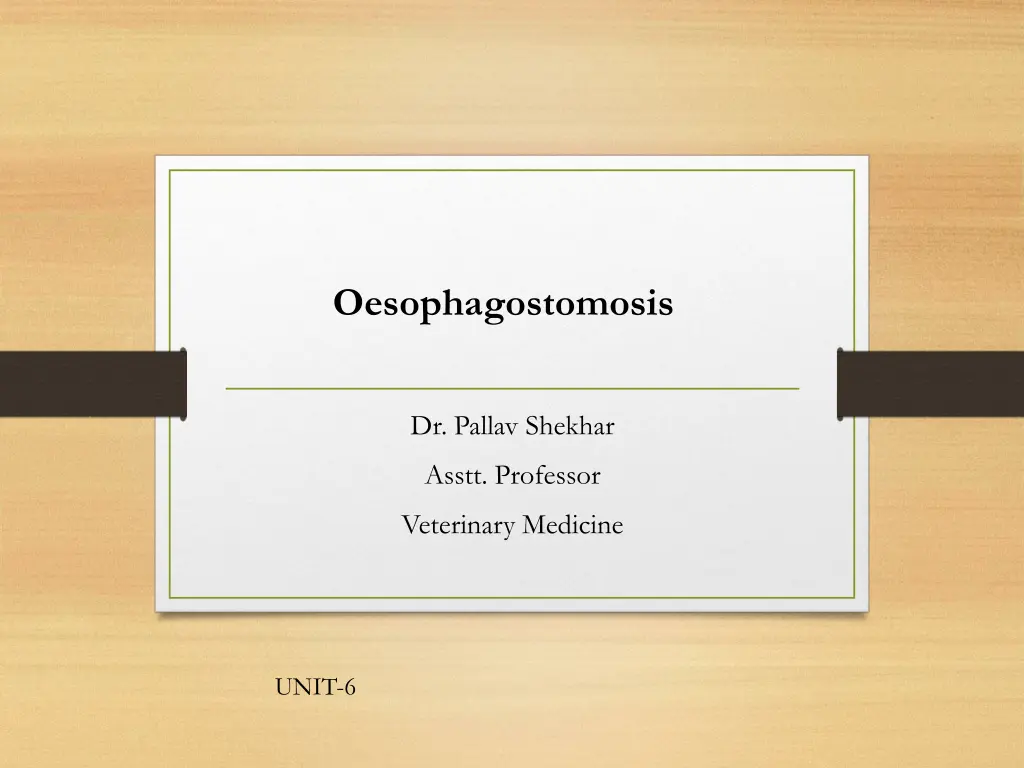
Understanding Oesophagostomosis: Causes, Symptoms, and Treatment
Oesophagostomosis, also known as nodule worm disease, affects various animals, excluding horses. The disease is caused by Oesophagostomum parasites and can lead to symptoms like anorexia, diarrhea, weight loss, anemia, and death. Learn about the etiology, life cycle, epidemiology, pathogenesis, clinical findings, necropsy findings, and treatment options for Oesophagostomosis in this comprehensive guide.
Download Presentation

Please find below an Image/Link to download the presentation.
The content on the website is provided AS IS for your information and personal use only. It may not be sold, licensed, or shared on other websites without obtaining consent from the author. If you encounter any issues during the download, it is possible that the publisher has removed the file from their server.
You are allowed to download the files provided on this website for personal or commercial use, subject to the condition that they are used lawfully. All files are the property of their respective owners.
The content on the website is provided AS IS for your information and personal use only. It may not be sold, licensed, or shared on other websites without obtaining consent from the author.
E N D
Presentation Transcript
Oesophagostomosis Dr. Pallav Shekhar Asstt. Professor Veterinary Medicine UNIT-6
Oesophagostomosis All forms of animal except horses harbour oesophagostomum. It produces disease k/a nodule worm disease or pimply gut or knotty gut
Etiology Sheep and goat O. Columbianum O. venulosum O. asperum O. Radiatum O. Venulosum Cattle O. dentatum O. quadrispinutatum Pig
Life cycle Oesophagostomum spp. Are generally host specific but O. venulosum produces disease both in cattle and sheep.
Life cycle Eggs faces L1 & L2 L3 stage infective Lumen of intestinal wall at the 4th larval stage Nodule formation Larva invade in intestinal wall Ingestion Adult worm Egg laying
Epidemiology Prevalence is highest in warmer temperature or sub tropical climate with summer rainfall.
Pathogenesis Nodule formation in intestine Anorexia Mucoid diarrhoea Loss of wt Anaemia Hypoprotenemia Death
Clinical findings Dark green faces Severe diarrhea in heavy infestation In chronic cases faces semisolid with excess mucous and occasionally blood
Necropsy findings Nodules found at all level of intestine Size of the nodule vary from upto 6mm and may contain green pasty or yellow brown calcified material
Treatment As other nematodes Thiabendazole @ 50mg/kg Albendazole @ 10 mg /kg Tetramisole HCL 15mg/kg
